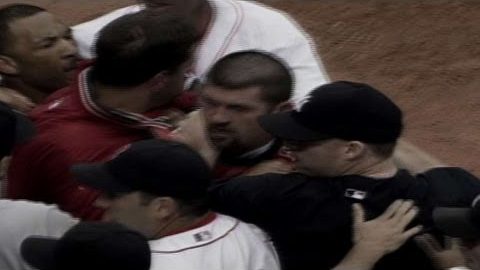Hurricane Irma could make the 2017 Atlantic hurricane season a historic one. The storm is currently barreling toward Florida as a Category 5 hurricane, with maximum sustained winds of 185 mph. Over the next 12 to 24 hours, the Leeward Islands, Puerto Rico and the U.S. Virgin Islands are likely to bear the brunt of the storm. And the U.S. mainland is in its path.
The National Hurricane Center’s five-day outlook forecasts that on Sunday afternoon, Irma will be just south of the Florida Keys as a powerful Category 4 hurricane, with maximum sustained winds of about 140 mph. Such a storm could come ashore in the state with heavy rain and a potentially devastating storm surge.
The last Category 4 storm to hit Florida was Hurricane Charley in 2004. While cutting across central Florida, the storm directly or indirectly killed 33 people and caused billions of dollars in property damage. If Irma’s projected track is accurate, the hurricane would probably also be costly and deadly.
But it’s still too early to know whether Irma will make landfall in the U.S. mainland or where that could occur. Despite big strides in forecast accuracy over the last 27 years,The data on this webpage showing annual average forecasting error for tropical cyclones starts in 1989.
‘>1 the National Hurricane Center’s five-day forecast comes with a wide margin of error. An average five-day track forecast is off by greater than 200 miles. That’s over 60 miles wider than the distance from St. Petersburg on the western coast of Florida to Vero Beach on the east.
You can get an idea of why the error range is so wide by looking at all the paths that different hurricane models say Irma could take. Take a look at this group,Note that there are more models than those plotted here. This is just for reference.
“>2 plotted by the South Florida Water Management District, for example:
Although they’re not the only tools that meteorologists use to try to figure out the most likely path of a hurricane, these models are one of the most important. And you can see the variation among them: Some show the storm heading east of Florida and into the Carolinas or out to sea, while a few take the storm over CubaWhich could weaken the storm before hitting the U.S. mainland.
“>3 and into the Gulf of Mexico.
So, if we combine the numerous paths that the models project with the historical forecast error five days out, the storm’s eventual path is still far from clear.
That’s why the hurricane center publishes a cone of uncertainty.
NOAA / NATIONAL WEATHER SERVICE
The error cone exists not out of an abundance of caution by a government agency but because of real mathematical uncertainty about where the storm will go. A track that takes Irma east or west of the Florida Peninsula — and anywhere in between — is still possible.
The most likely track, however, remains the center of that cone, which currently passes very close to the Florida Keys. That’s why the National Hurricane Center specifically mentions that the likelihood of “direct impacts from Irma beginning later this week and this weekend from wind, storm surge, and rainfall continues to increase in the Florida Keys and portions of the Florida Peninsula.”
Even if the forecasts about Irma’s path end up being accurate, the storm is unlikely to be a Florida version of Hurricane Harvey, which devastated Southeast Texas and southwestern Louisiana over the last few weeks with days of heavy rainfall. Unlike Harvey, Irma, at this point, is not expected to stall over the same area for a long period of time. And that means Florida wouldn’t get the tremendous amount of rain that Harvey dropped on Houston (although Irma could still spread a lot of rain over an even wider area).
But Harvey and Irma may join the history books together. Irma could make landfall in the continental U.S. as a Category 4 storm, as Harvey did in August. Since 1851, there hasn’t been another year in which two Category 4 storms have directly affected the continental U.S. The Atlantic Oceanographic and Meteorological Laboratory points out that record-keeping for some of the smaller and older storms isn’t perfect, but regardless, two Category 4 storms hitting the U.S. in the same season would be very rare.
For now, people in the southeastern U.S. need to keep an eye on Irma. And people in southern Florida should start preparing for a possible impact. Key West has already ordered a mandatory evacuation of residents starting Wednesday night.

